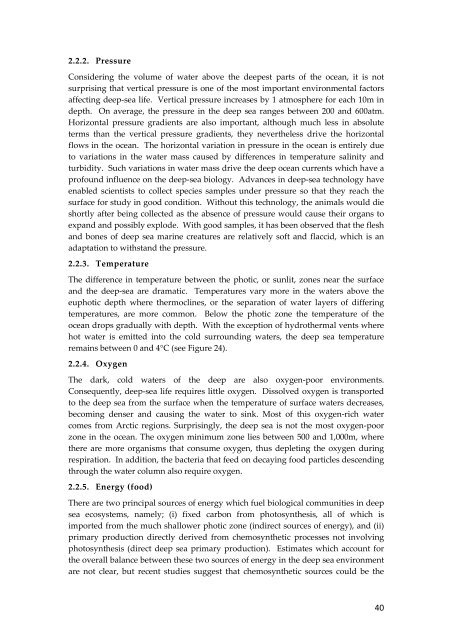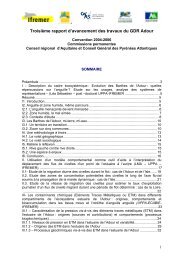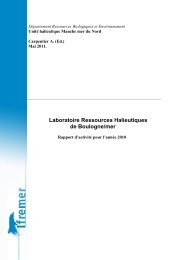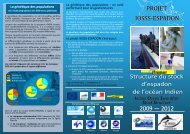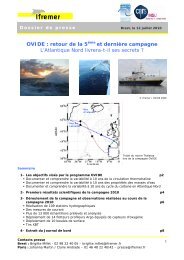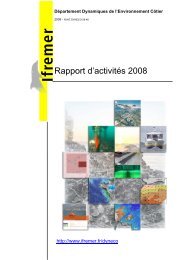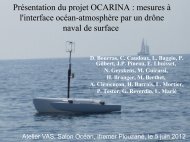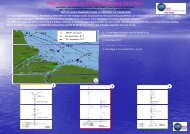DELIVERABLE D2.1 - Ifremer
DELIVERABLE D2.1 - Ifremer
DELIVERABLE D2.1 - Ifremer
Create successful ePaper yourself
Turn your PDF publications into a flip-book with our unique Google optimized e-Paper software.
2.2.2. PressureConsidering the volume of water above the deepest parts of the ocean, it is notsurprising that vertical pressure is one of the most important environmental factorsaffecting deep-sea life. Vertical pressure increases by 1 atmosphere for each 10m indepth. On average, the pressure in the deep sea ranges between 200 and 600atm.Horizontal pressure gradients are also important, although much less in absoluteterms than the vertical pressure gradients, they nevertheless drive the horizontalflows in the ocean. The horizontal variation in pressure in the ocean is entirely dueto variations in the water mass caused by differences in temperature salinity andturbidity. Such variations in water mass drive the deep ocean currents which have aprofound influence on the deep-sea biology. Advances in deep-sea technology haveenabled scientists to collect species samples under pressure so that they reach thesurface for study in good condition. Without this technology, the animals would dieshortly after being collected as the absence of pressure would cause their organs toexpand and possibly explode. With good samples, it has been observed that the fleshand bones of deep sea marine creatures are relatively soft and flaccid, which is anadaptation to withstand the pressure.2.2.3. TemperatureThe difference in temperature between the photic, or sunlit, zones near the surfaceand the deep-sea are dramatic. Temperatures vary more in the waters above theeuphotic depth where thermoclines, or the separation of water layers of differingtemperatures, are more common. Below the photic zone the temperature of theocean drops gradually with depth. With the exception of hydrothermal vents wherehot water is emitted into the cold surrounding waters, the deep sea temperatureremains between 0 and 4°C (see Figure 24).2.2.4. OxygenThe dark, cold waters of the deep are also oxygen-poor environments.Consequently, deep-sea life requires little oxygen. Dissolved oxygen is transportedto the deep sea from the surface when the temperature of surface waters decreases,becoming denser and causing the water to sink. Most of this oxygen-rich watercomes from Arctic regions. Surprisingly, the deep sea is not the most oxygen-poorzone in the ocean. The oxygen minimum zone lies between 500 and 1,000m, wherethere are more organisms that consume oxygen, thus depleting the oxygen duringrespiration. In addition, the bacteria that feed on decaying food particles descendingthrough the water column also require oxygen.2.2.5. Energy (food)There are two principal sources of energy which fuel biological communities in deepsea ecosystems, namely; (i) fixed carbon from photosynthesis, all of which isimported from the much shallower photic zone (indirect sources of energy), and (ii)primary production directly derived from chemosynthetic processes not involvingphotosynthesis (direct deep sea primary production). Estimates which account forthe overall balance between these two sources of energy in the deep sea environmentare not clear, but recent studies suggest that chemosynthetic sources could be the40


